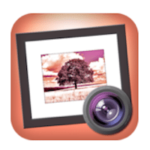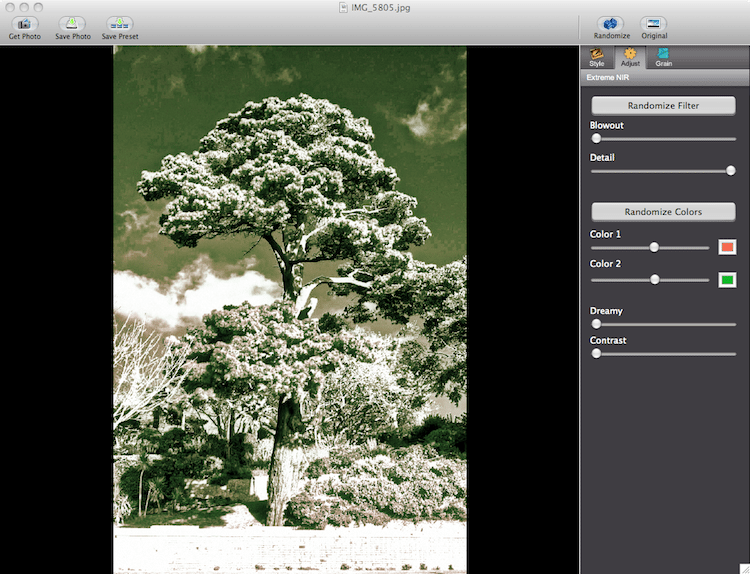
White trees and black skies – enter the world of warped color, known as infra-red photography. In recent years, the rise of affordable DSLRs has enabled photographers to put “last year’s model” aside for conversion to infra-red, and, as a result, infra-red has seen somewhat of a renaissance, particularly with landscape photographers looking for a way to make their pictures different. As with other forms of in-camera stylistics, infra-red is a look which a number of app publishers have tried to copy, but most have found that a realistic infra-red look is almost impossible to achieve. Can NIR Color, by JixiPix, provide a better experience?
The first thing I must say before looking at NIR in any depth is this – IR imaging is not truly replicable with a computer. Software can guess how colors would have appeared if taken in infra-red, but a true reflection of a scene as pictured in infra-red is impossible.
With this in mind, it is not surprising that NIR’s color-shifting filters don’t make an image look like it was taken in IR. But then again, JixiPix haven’t really attempted to make an IR emulator. The clue is in the name – it is called NIR Color, not IR Color.

The N stands for Near (Infra-Red), but the filters in NIR Color are nothing other than tone-altering – the digital equivalent of adding color tone to a monochrome print.
Some of these filters are quite attractive – in the way that some toned monochrome prints are attractive. You can, however, change the “toning” colors used, adjust contrast, glow and the highlights/shadows, as well as adding grain to your image; you can then save your combination as a preset. I would say that when you really start playing around with these adjustments in NIR Color, you can get some nice (if somewhat wacky) results. It is a shame that, on one of my test images, no matter what I did with the sliders, I couldn’t get rid of burnout (and before anyone disses, no the image wasn’t burnt out before it entered NIR Color…). Most of the time, however, NIR Color provides a genuinely old-looking, grainy, weird-colored image, which is a good thing if you’re into making your pictures look like they were taken by a Roman.
I should also note that NIR works well as an app – it’s fairly quick to start, and images load at a perfectly good speed.
Should you buy NIR Color, then? Well, as with all of these small offerings, you have to weigh up your options – should you buy three different cheap apps, each providing a single effect? Or should you just go the whole hog, buy Elements and learn how to use it? I would always recommend the latter, but when cheap and cheerful apps like NIR Color do the job they’re supposed to, I don’t have too much objection to the $5.99/£3.82 price-tag.
You can purchase NIR Color via JixiPix’s website.
*The Current Photographer website contains links to our affiliate partners. Purchasing products and services through these links helps support our efforts to bring you the quality information you love and there’s no additional cost to you.
Mark Myerson loves photography, and in particular, hanging around waterfalls! Landscapes and nature have always been his staple, but he relishes any opportunity to take pictures. He also works closely with many local charities, regularly providing photographic coverage of fundraising events.
Mark is also a self-confessed tech-head and OSX lover – Apple is his favourite fruit!
Mark is the owner of Mark Myerson Photography, a Devon-based business that provides a large variety of photographic services to the local community and beyond. Whilst Mark Myerson Photography specialises in event, commercial and pet photography, almost every type of photographic assignment has been covered by the company.
If you have any photography or OSX-related questions, you can contact Mark via the links given below.